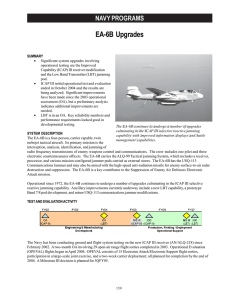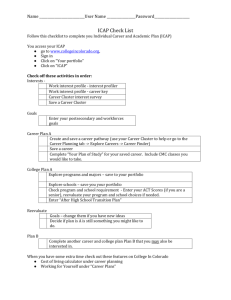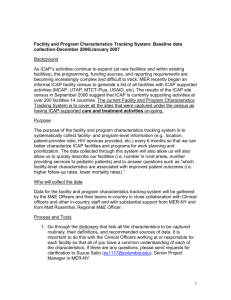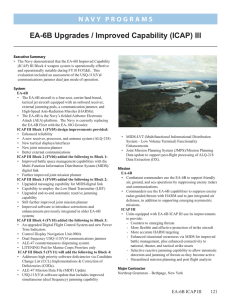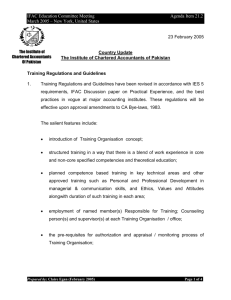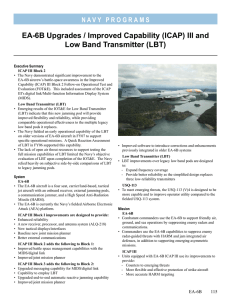EA-6B Improved Capability Three (ICAP III) System
advertisement
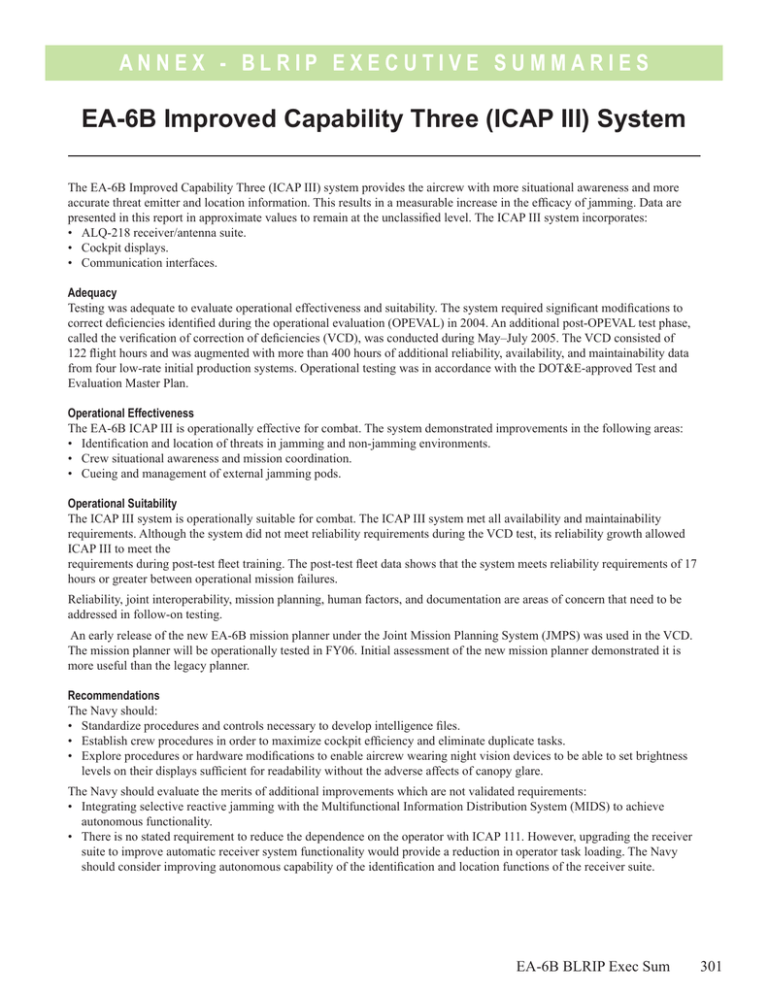
ANNEX - BLRIP EXECUTIVE SUMMARIES EA-6B Improved Capability Three (ICAP III) System The EA-6B Improved Capability Three (ICAP III) system provides the aircrew with more situational awareness and more accurate threat emitter and location information. This results in a measurable increase in the efficacy of jamming. Data are presented in this report in approximate values to remain at the unclassified level. The ICAP III system incorporates: • ALQ-218 receiver/antenna suite. • Cockpit displays. • Communication interfaces. Adequacy Testing was adequate to evaluate operational effectiveness and suitability. The system required significant modifications to correct deficiencies identified during the operational evaluation (OPEVAL) in 2004. An additional post-OPEVAL test phase, called the verification of correction of deficiencies (VCD), was conducted during May–July 2005. The VCD consisted of 122 flight hours and was augmented with more than 400 hours of additional reliability, availability, and maintainability data from four low-rate initial production systems. Operational testing was in accordance with the DOT&E-approved Test and Evaluation Master Plan. Operational Effectiveness The EA-6B ICAP III is operationally effective for combat. The system demonstrated improvements in the following areas: • Identification and location of threats in jamming and non-jamming environments. • Crew situational awareness and mission coordination. • Cueing and management of external jamming pods. Operational Suitability The ICAP III system is operationally suitable for combat. The ICAP III system met all availability and maintainability requirements. Although the system did not meet reliability requirements during the VCD test, its reliability growth allowed ICAP III to meet the requirements during post-test fleet training. The post-test fleet data shows that the system meets reliability requirements of 17 hours or greater between operational mission failures. Reliability, joint interoperability, mission planning, human factors, and documentation are areas of concern that need to be addressed in follow-on testing. An early release of the new EA-6B mission planner under the Joint Mission Planning System (JMPS) was used in the VCD. The mission planner will be operationally tested in FY06. Initial assessment of the new mission planner demonstrated it is more useful than the legacy planner. Recommendations The Navy should: • Standardize procedures and controls necessary to develop intelligence files. • Establish crew procedures in order to maximize cockpit efficiency and eliminate duplicate tasks. • Explore procedures or hardware modifications to enable aircrew wearing night vision devices to be able to set brightness levels on their displays sufficient for readability without the adverse affects of canopy glare. The Navy should evaluate the merits of additional improvements which are not validated requirements: • Integrating selective reactive jamming with the Multifunctional Information Distribution System (MIDS) to achieve autonomous functionality. • There is no stated requirement to reduce the dependence on the operator with ICAP 111. However, upgrading the receiver suite to improve automatic receiver system functionality would provide a reduction in operator task loading. The Navy should consider improving autonomous capability of the identification and location functions of the receiver suite. EA-6B BLRIP Exec Sum 301 302
